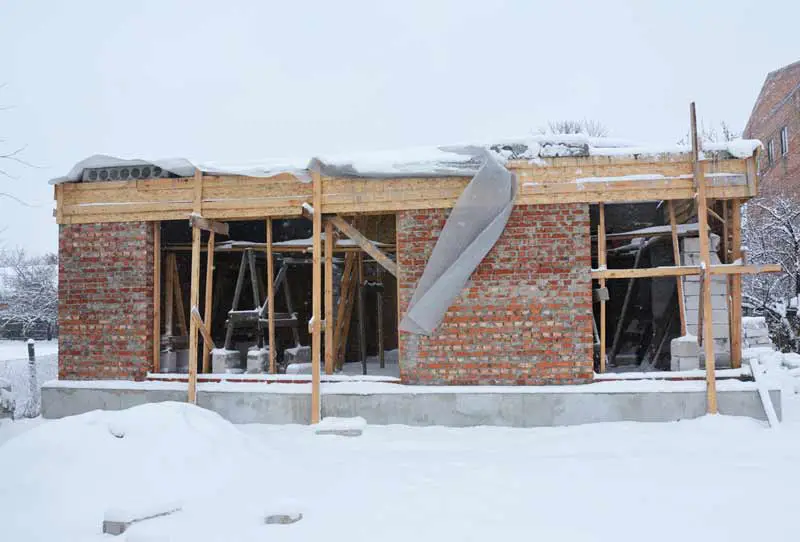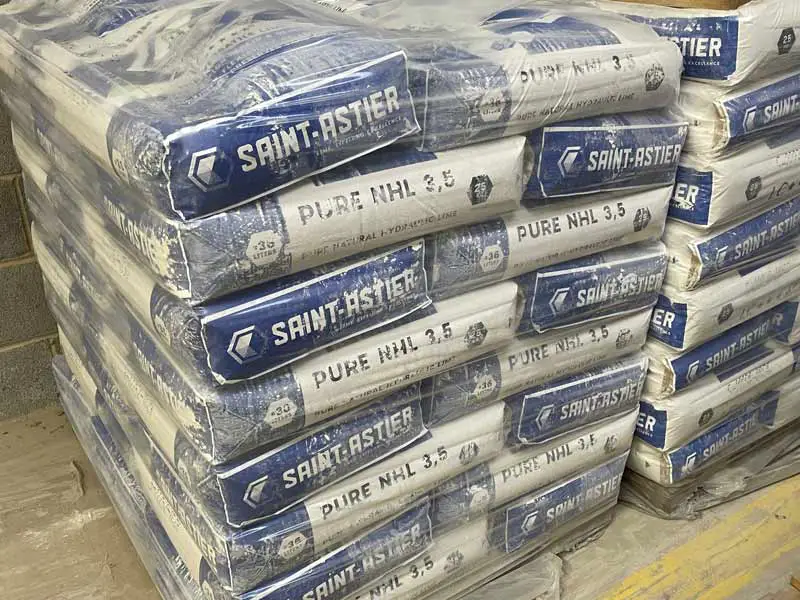
When it comes to construction projects, the use of lime mortar is a popular choice for many builders. Lime mortar is a mixture of lime, sand, and water that has been used for centuries in construction. However, one question that often arises is whether lime mortar can be used in the winter.
While there is no straightforward answer to this question, it is generally recommended that lime mortar should not be used in temperatures below 5°C. This is because lime mortar requires a certain amount of heat and moisture to set and harden. If the temperature drops below this threshold, the mortar may not set properly, leading to structural issues down the line.
That being said, some steps can be taken to ensure that lime mortar can be used in colder temperatures. These include using a heated enclosure to keep the temperature stable, using additives to help the mortar set, and ensuring that the mortar is protected from frost and other elements.
By taking these precautions, it is possible to use lime mortar in the winter. However, it is important to exercise caution and follow best practices to ensure that the mortar sets properly and the structure remains sound.
Can You Use Lime Mortar in Cold Winter Conditions?
Using lime mortar in winter conditions is a common question among builders and homeowners. While it is possible to use lime mortar in the winter, there are several factors to consider before doing so.
Factors to Consider
The temperature is one of the most important factors to consider when using lime mortar in the winter. Lime mortar should not be used if the temperature is 5°C or less. Generally, the lower the temperature, the slower the lime mortar will set.
However, if adequate protection and a heat source can be provided, lime mortar can be used in temperatures as low as -5°C. Although, it’s still best to check the weather forecast and wait for a good 2-week period where the temperatures are consistently above 5°C.
Risk of Frost Damage
One of the biggest risks of using lime mortar in the winter is the potential for frost damage. Frost damage can occur when moisture in the mortar freezes, causing it to expand and crack. This can lead to weakened mortar which will often crumble and cause potential structural damage to the building.
To avoid frost damage, protecting the mortar from freezing temperatures is important. This can be done by using insulating materials or temporary covers like hessian sheeting to protect the mortar from the cold.
How Cold Weather Affects Building Materials
It is important to note that not only does cold weather affect the use of lime mortar, but it also affects other building materials. For example, cold temperatures can also affect concrete and masonry, as they can become brittle and prone to cracking after frost exposure.
To avoid damage to building materials, it is important to use proper insulation and temporary covers to protect materials from the cold.

Related article: The Effects of Freezing on Lime Mortar and Plaster
How to Use Lime Mortar in Winter?
Preparation
Using lime mortar in winter requires some special preparation to ensure that the mortar sets properly and adheres well. Here are some tips:
- Store your lime mortar in a warm, dry place before use to ensure it doesn’t freeze. Frozen lime mortar cannot be used as the strength will be compromised.
- When mixing lime before application, make sure no ice or other extremely cold water is added. Take care that the mortar doesn’t freeze shortly after it’s mixed.
- Make sure that the surface you’re applying the mortar to is clean and free of ice or snow. If necessary, use a heat source to melt and warm up the surface before application.
Application
When applying lime mortar in winter, it’s important to take some additional steps to ensure that it sets properly:
- Use a lime mortar better suited for winter conditions, such as an NHL, as this will ensure that the mortar has a better chance of setting properly even in cold temperatures.
- Avoid applying the mortar in temperatures below 5°C (41°F), as this can cause the mortar to freeze and fail to set properly.
- If possible, work in small sections and keep the mortar covered with hessian sheeting to prevent it from freezing before it sets.
- Consider using a heat source, such as a portable heater or heat lamp, to warm the surface before and during application to ensure that the mortar sets properly. But be careful rapid drying of the mortar doesn’t occur when heated, as this, too, will cause weakness.
By following these tips, you can successfully use lime mortar in winter conditions and ensure that your building projects are completed to a high standard.
Advantages of Using Natural Hydraulic Lime (NHL) in the Winter
Working with lime mortar in the winter can be challenging due to the cold and damp weather. However, using natural hydraulic lime (NHL) can provide several advantages when working in these conditions. Here are some benefits of using NHL in the winter:
- Fast setting: NHL has a much faster setting time compared to traditional non-hydraulic lime mortar. This means that it can be used in colder temperatures if there’s a short window of time where temperatures allow.
- Increased strength: NHL has a higher compressive strength compared to other types of lime. This makes it ideal for use in exposed areas that are prone to harsh weather conditions.
Overall, using natural hydraulic lime (NHL) can provide several advantages when working with lime mortar in the winter. It has a faster setting time and increased strength. A faster set time means it can be used in a short warmer spell where non-hydraulic limes would take too long to set.

Further Tips for Using Lime Mortar in Winter
When working with lime mortar in winter, it’s important to take certain precautions to ensure the best results. Here are some tips:
- Use a lime mortar better suited to winter conditions, this could mean it is made using NHL or contains pozzolans which can help speed up set times. This will give the mortar the best chance of setting properly before it’s damaged by frost.
- Avoid using lime products when temperatures are consistently below 5°C (41°F). This can cause the mortar to freeze and not set correctly.
- Keep the mortar and tools warm. Cold temperatures can affect the setting time of the mortar, so it’s important to keep it at a consistent temperature. Store the mortar and tools in a warm place before and during use.
- Work in small sections. This will allow you to complete the work before the mortar has a chance to freeze.
- Protect the mortar from freezing. Cover the mortar with hessian sheets or other protective material to prevent it from freezing. If the mortar does freeze, it will need to be discarded and replaced.
- Finally, make sure you are aware that lime mortars, especially lime putty (or fat lime) mortars set via a very slow process. Care must be taken to ensure they set properly.
By following these tips, you can ensure that your lime mortar work in winter is successful and long-lasting.
Related article: Why Does Lime Mortar Fail? The Common Causes and Prevention
Conclusion
Working with lime mortar during the winter months can be challenging, but it is possible if you take the necessary precautions. While lime mortar can be used in the winter, it is important to keep in mind the limitations and challenges that come with it.
During winter, using lime mortar can pose challenges due to frost damage. The strength development rate of lime mortar decreases as the temperature drops. If the mortar is saturated with water, it becomes more susceptible to damage and failure.
However, there are ways to mitigate these challenges. For instance, using lime mortars more suited for use during winter, like natural hydraulic lime (NHL) or adding pozzolans.
Ultimately, whether or not to use lime mortar in the winter will depend on the specific project and circumstances. It is important to consult with a professional and take into account the factors discussed in this article to make an informed decision.

